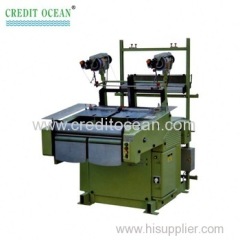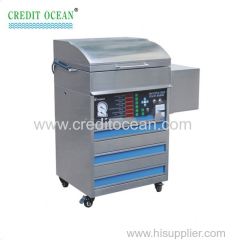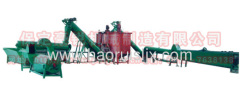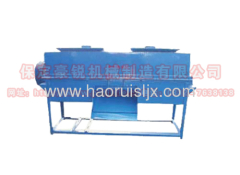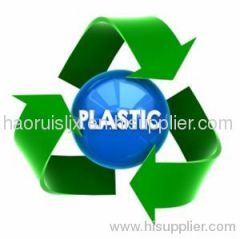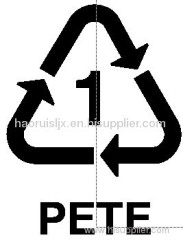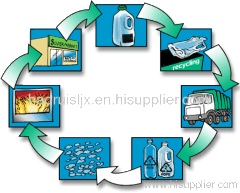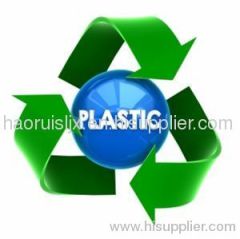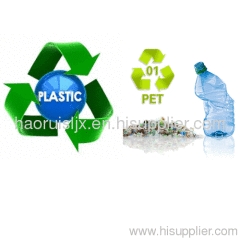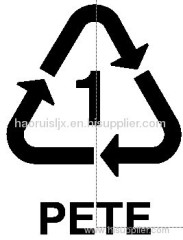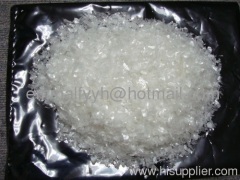
|
Baoding Haorui Machinery Manufacturing Co., Ltd.
|
mini waste plastic washing line
| Payment Terms: | T/T,L/C,WU, |
| Place of Origin: | Hebei, China (Mainland) |
|
|
|
| Add to My Favorites | |
| HiSupplier Escrow |
Product Detail
for the finest plastic recycling services that you are searching to receive from the experts in the plastic recycling business,contact us today.
PP\PE film recycling cleaning line
It has the advantages of high quality, high efficiency, competitive price, loe energy consuming, low in noise, short delivery time, ect.
- To reduce environment pollution caused by waste plastics, improve environment for human surival. Guanghzou Mikasa Machinery Pte. Ltd, . Organized engineer learn and investigate abroad many years. After Market researching home and abroad, absorption of advanced foreign technology, with many years working in market, it make the waste plastics washing and recyling come ture including the PET Bottle Flakes washing and filn washing. Winning top-grade level from home and abroad. This system gains good response on domestic using and now has sold to America, Germany, Japen, Malaysia and other countries.
1. This machine line is used for waste bottles which need to be crushed, washed, dryed.
2. Production Capacity: 300-3000kg/h (without label remover machine).
3. It has the advantages of high quality, high efficiency, competitive price, loe energy consuming, low in noise, short delivery time, ect.
4. If you want to know more details, please contact with me without hesition.
We can also manufacture as the request of clients'.
Haorui recycling is today supplying various plastic recycling materials to various plastic companies around the province.
the plastic is sorted into the accurate plastic groups.
so if your company are needing good quality recycled machines or are neecing good quality recycled materials plastic contact us.
It has the advantages of high quality, high efficiency, competitive price, loe energy consuming, low in noise, short delivery time, ect.
- To reduce environment pollution caused by waste plastics, improve environment for human surival. Guanghzou Mikasa Machinery Pte. Ltd, . Organized engineer learn and investigate abroad many years. After Market researching home and abroad, absorption of advanced foreign technology, with many years working in market, it make the waste plastics washing and recyling come ture including the PET Bottle Flakes washing and filn washing. Winning top-grade level from home and abroad. This system gains good response on domestic using and now has sold to America, Germany, Japen, Malaysia and other countries.
1. This machine line is used for waste bottles which need to be crushed, washed, dryed.
2. Production Capacity: 300-3000kg/h (without label remover machine).
3. It has the advantages of high quality, high efficiency, competitive price, loe energy consuming, low in noise, short delivery time, ect.
4. If you want to know more details, please contact with me without hesition.
We can also manufacture as the request of clients'.
separating the bottles from the other types of plastic: after the scrap plastic arrival to the factory, in the first part of the recycling drive is sorting the bottles according to their color and composition and removing the labels. The caps and cap rings (those made of polypropylene) are separated and also recycled.
washing and grinding: the bottles are being washed in order to remove the remaining surface contamination and other incompatible polymer that are later found floating in on the surface of the water during the process commonly called "process of swimming and sinking" PET is heavier than water, so it will sink, the remaining materials will float, which makes it easy to collect them and put them aside, during the PET washing phase, the caps and labels made of PP or HDPE will also float and enable us easy removal.
Plastic Recycling Symbol 1
Sometimes it seems like modern America is one colossal plastic palace. The versatile material is in our cars, toys, packaging, clothing, home goods, food utensils, medical devices and so much more. It is also littering our streets, clogging our waterways and choking marine life. Many plastics can be readily recycled, but how do consumers make sense of all the different types and rules?
Number 1 Plastics
PET or PETE (polyethylene terephthalate)
Found in:Soft drink, water and beer bottles; mouthwash bottles; peanut butter containers; salad dressing and vegetable oil containers; ovenable food trays.
Recycling: Picked up through most curbside recycling programs.
Recycled into: Polar fleece, fiber, tote bags, furniture, carpet, paneling, straps, (occasionally) new containers.PET plastic is the most common for single-use bottled beverages, because it is inexpensive, lightweight and easy to recycle. It poses low risk of leaching breakdown products. Recycling rates remain relatively low (around 20%), though the material is in high demand by remanufacturers.
PET or PETE (polyethylene terephthalate)
Found in:Soft drink, water and beer bottles; mouthwash bottles; peanut butter containers; salad dressing and vegetable oil containers; ovenable food trays.
Recycling: Picked up through most curbside recycling programs.
Recycled into: Polar fleece, fiber, tote bags, furniture, carpet, paneling, straps, (occasionally) new containers.PET plastic is the most common for single-use bottled beverages, because it is inexpensive, lightweight and easy to recycle. It poses low risk of leaching breakdown products. Recycling rates remain relatively low (around 20%), though the material is in high demand by remanufacturers.
Plastic Recycling Symbol 2
Number 2 Plastics
HDPE (high density polyethylene)
Found in: Milk jugs, juice bottles; bleach, detergent and household cleaner bottles; shampoo bottles; some trash and shopping bags; motor oil bottles; butter and yogurt tubs; cereal box liners
Recycling: Picked up through most curbside recycling programs, although some allow only those containers with necks.
Recycled into:Laundry detergent bottles, oil bottles, pens, recycling containers, floor tile, drainage pipe, lumber, benches, doghouses, picnic tables, fencing.
HDPE (high density polyethylene)
Found in: Milk jugs, juice bottles; bleach, detergent and household cleaner bottles; shampoo bottles; some trash and shopping bags; motor oil bottles; butter and yogurt tubs; cereal box liners
Recycling: Picked up through most curbside recycling programs, although some allow only those containers with necks.
Recycled into:Laundry detergent bottles, oil bottles, pens, recycling containers, floor tile, drainage pipe, lumber, benches, doghouses, picnic tables, fencing.
HDPE is a versatile plastic with many uses, especially for packaging. It carries low risk of leaching and is readily recyclable into many goods.
Plastic Recycling Symbol 3
Number 3 Plastics
V (Vinyl) or PVC
Found in: Window cleaner and detergent bottles, shampoo bottles, cooking oil bottles, clear food packaging, wire jacketing, medical equipment, siding, windows, piping
Recycling: Rarely recycled; accepted by some plastic lumber makers.
Recycled into: Decks, paneling, mudflaps, roadway gutters, flooring, cables, speed bumps, mats.
V (Vinyl) or PVC
Found in: Window cleaner and detergent bottles, shampoo bottles, cooking oil bottles, clear food packaging, wire jacketing, medical equipment, siding, windows, piping
Recycling: Rarely recycled; accepted by some plastic lumber makers.
Recycled into: Decks, paneling, mudflaps, roadway gutters, flooring, cables, speed bumps, mats.
PVC is tough and weathers well, so it is commonly used for piping, siding and similar applications. PVC contains chlorine, so its manufacture can release highly dangerous dioxins. If you must cook with PVC, don't let the plastic touch food. Also never burn PVC, because it releases toxins.
Plastic Recycling Symbol 4
Number 4 Plastics
LDPE (low density polyethylene)
Found in: Squeezable bottles; bread, frozen food, dry cleaning and shopping bags; tote bags; clothing; furniture; carpet
Recycling: LDPE is not often recycled through curbside programs, but some communities will accept it. Plastic shopping bags can be returned to many stores for recycling.
Recycled into: Trash can liners and cans, compost bins, shipping envelopes, paneling, lumber, landscaping ties, floor tile
LDPE (low density polyethylene)
Found in: Squeezable bottles; bread, frozen food, dry cleaning and shopping bags; tote bags; clothing; furniture; carpet
Recycling: LDPE is not often recycled through curbside programs, but some communities will accept it. Plastic shopping bags can be returned to many stores for recycling.
Recycled into: Trash can liners and cans, compost bins, shipping envelopes, paneling, lumber, landscaping ties, floor tile
LDPE is a flexible plastic with many applications. Historically it has not been accepted through most American curbside recycling programs, but more and more communities are starting to accept it.
Plastic Recycling Symbols 5
Number 5 Plastics
PP (polypropylene)
Found in: Some yogurt containers, syrup bottles, ketchup bottles, caps, straws, medicine bottles
Recycling: Number 5 plastics can be recycled through some curbside programs.
Recycled into: Signal lights, battery cables, brooms, brushes, auto battery cases, ice scrapers, landscape borders, bicycle racks, rakes, bins, pallets, trays
PP (polypropylene)
Found in: Some yogurt containers, syrup bottles, ketchup bottles, caps, straws, medicine bottles
Recycling: Number 5 plastics can be recycled through some curbside programs.
Recycled into: Signal lights, battery cables, brooms, brushes, auto battery cases, ice scrapers, landscape borders, bicycle racks, rakes, bins, pallets, trays
Polypropylene has a high melting point, and so is often chosen for containers that must accept hot liquid. It is gradually becoming more accepted by recyclers.
Plastic Recycling Symbol 6
Number 6 Plastics
PS (polystyrene)
Found in:Disposable plates and cups, meat trays, egg cartons, carry-out containers, aspirin bottles, compact disc cases
Recycling:Number 6 plastics can be recycled through some curbside programs.
Recycled into: Insulation, light switch plates, egg cartons, vents, rulers, foam packing, carry-out containers
PS (polystyrene)
Found in:Disposable plates and cups, meat trays, egg cartons, carry-out containers, aspirin bottles, compact disc cases
Recycling:Number 6 plastics can be recycled through some curbside programs.
Recycled into: Insulation, light switch plates, egg cartons, vents, rulers, foam packing, carry-out containers
Polystyrene can be made into rigid or foam products -- in the latter case it is popularly known as the trademark Styrofoam. Evidence suggests polystyrene can leach potential toxins into foods. The material was long on environmentalists' hit lists for dispersing widely across the landscape, and for being notoriously difficult to recycle. Most places still don't accept it, though it is gradually gaining traction.
Plastic Recycling Symbol 7
Number 7 Plastics
Miscellaneous
Found in: Three- and five-gallon water bottles, 'bullet-proof' materials, sunglasses, DVDs, iPod and computer cases, signs and displays, certain food containers, nylon
Recycling:Number 7 plastics have traditionally not been recycled, though some curbside programs now take them.
Recycled into: Plastic lumber, custom-made products
Miscellaneous
Found in: Three- and five-gallon water bottles, 'bullet-proof' materials, sunglasses, DVDs, iPod and computer cases, signs and displays, certain food containers, nylon
Recycling:Number 7 plastics have traditionally not been recycled, though some curbside programs now take them.
Recycled into: Plastic lumber, custom-made products
A wide variety of plastic resins that don't fit into the previous categories are lumped into number 7. A few are even made from plants (polyactide) and are compostable. Polycarbonate is number 7, and is the hard plastic that has parents worried these days, after studies have shown it can leach potential hormone disruptors.
the aim of haorui recycling is to provide quality recycled plastic to plastic converters through their plastic recycling process.Haorui recycling is today supplying various plastic recycling materials to various plastic companies around the province.
the plastic is sorted into the accurate plastic groups.
so if your company are needing good quality recycled machines or are neecing good quality recycled materials plastic contact us.
Didn't find what you're looking for?
Post Buying Lead or contact
HiSupplier Customer Service Center
for help!
Related Search
Plastic Washing Line
Washing Line
Mini Washing
Pe Washing Line
Pet Bottle Washing Line
Pe Film Washing Line
More>>


